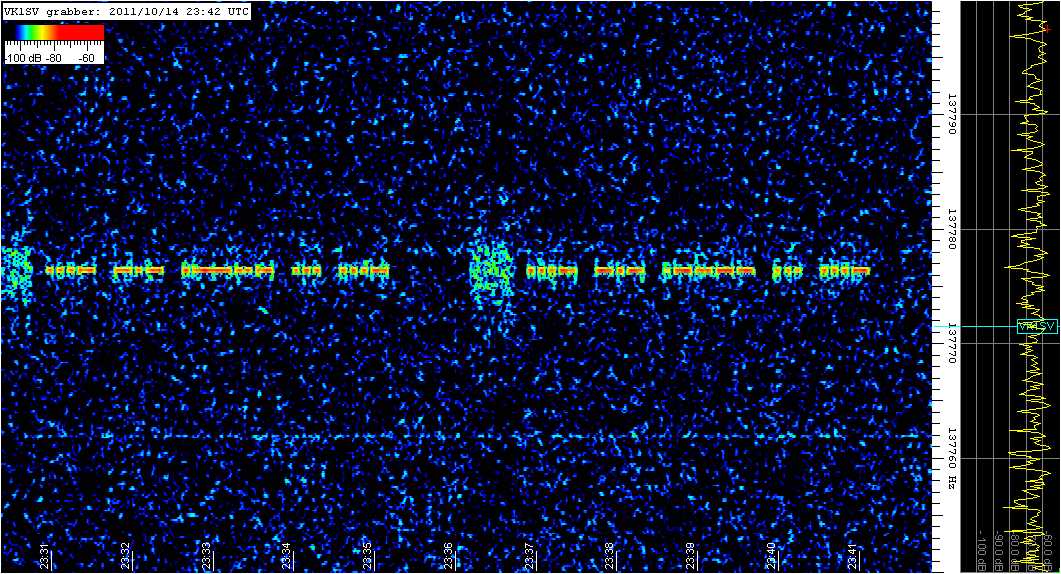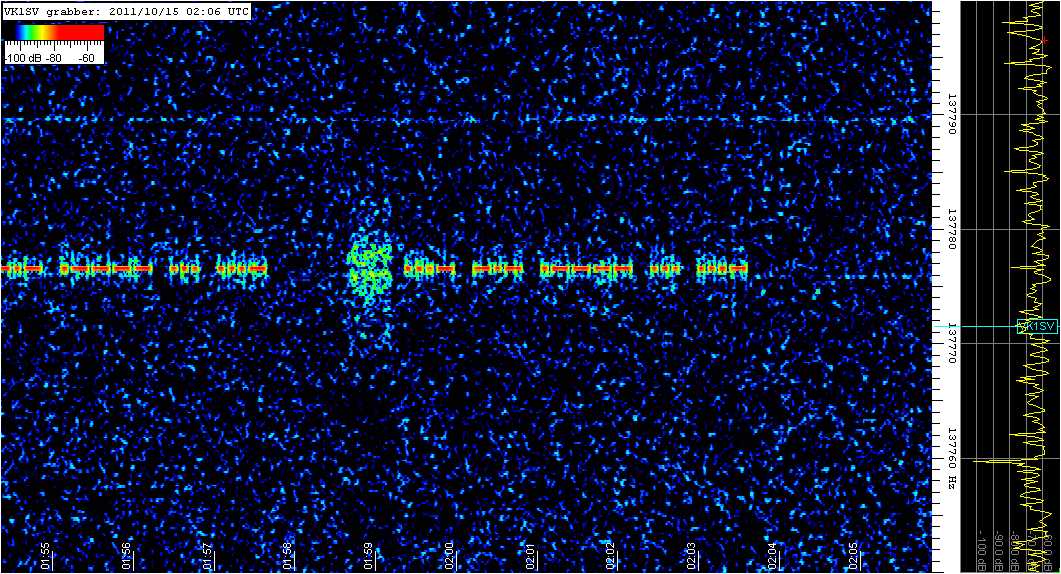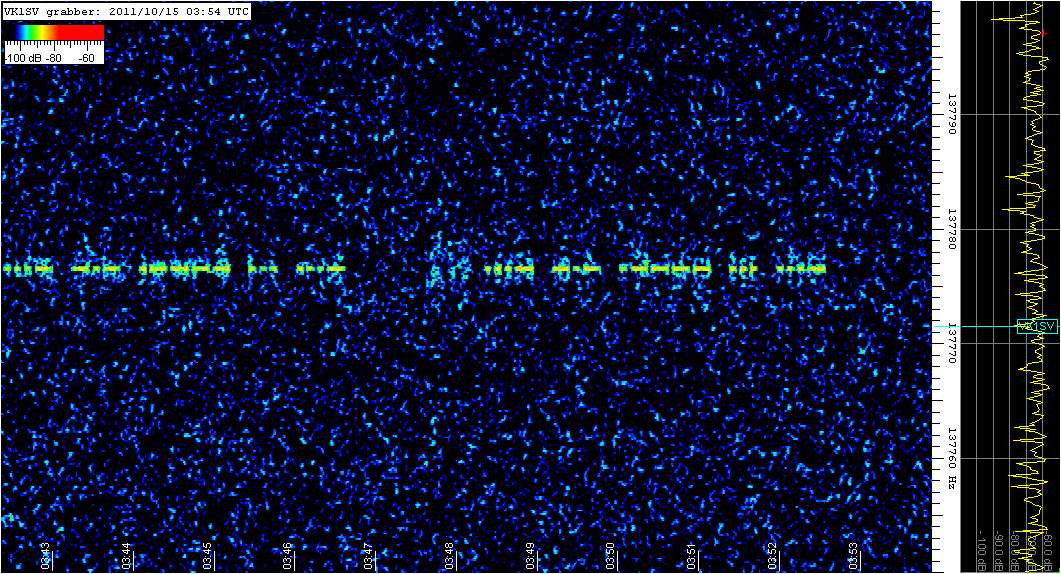
This is the third experiment with earth dipoles. This time, Dale VK1DSH came along to do some field strength measurements. It turned out that there wasn't much signal present, even at a close distance, so we didn't managed to take any readings...
This is the baseline 100 m long, N-S dipole described in the previous experiments. The wire was simply placed on the ground. The impedance (best tap) was around 450 Ohm and I was slightly leading V.


VK2DDI, David, is about 140 km away from from the transmitter site and the bearing from the transmitter site is 79 degrees. It is therefore expected that VK2DDI will have a better signal from the N-S dipole (not taking into account the geology of the area of course). Also it appears that the clock in David's computer is 2 hours ahead of UTC. This was due to Win7 making a daylight saving time change that went unnoticed.
The wire was eleveted from the ground by about 1 m, using wooden tomato stakes :-) The impedance (best tap on autotransformer) was again around 450 Ohm but this time there was no reactive component.


The length was increased to almost 200 m, still in N-S direction. The same tap on the autotransformer gave the best match, but this time the voltage was slightly leading the current. The wire was on the ground.


The wire was moved to an E-W direction, going through the forrest. 100 m length, ~600 Ohm. The wire was on the ground. Current was slightly ahead of voltage.


It seems that VK2DDI did not capture any of the signals from the E-W dipole - a sign of the directionality of the earth dipole?
The remote end of the 100 m wire was connected to the fence. ~225 Ohm, voltage ahead of current by a fair bit!

There is no data from VK2DDI for this test.
A loop of ~170 m circumference was placed on the ground. No earth rods, big mismatch.

There is no data from VK2DDI for this test.
Spectrum lab was set to record every second the noise (noise_n(137750,137765)) and the peak amplitude of my signal (peak_a(137774,137777)). The following is a plot of the resulting data:

The raw data can be downloaded here.
1) The elevated wire configuration is 1 or 2 dB better than the wire-on-ground one.
2) The 200 m length is better by about 7 dB compared to the 100 m one.
If you find all that interesting, I recommend to visit the links in
the top of this page.
Go back to the main earth antenna page.
Dimitris Tsifakis, VK1S